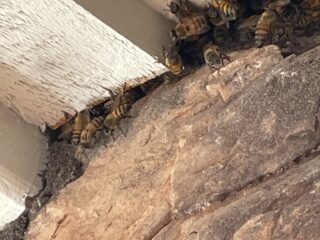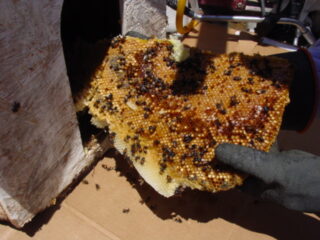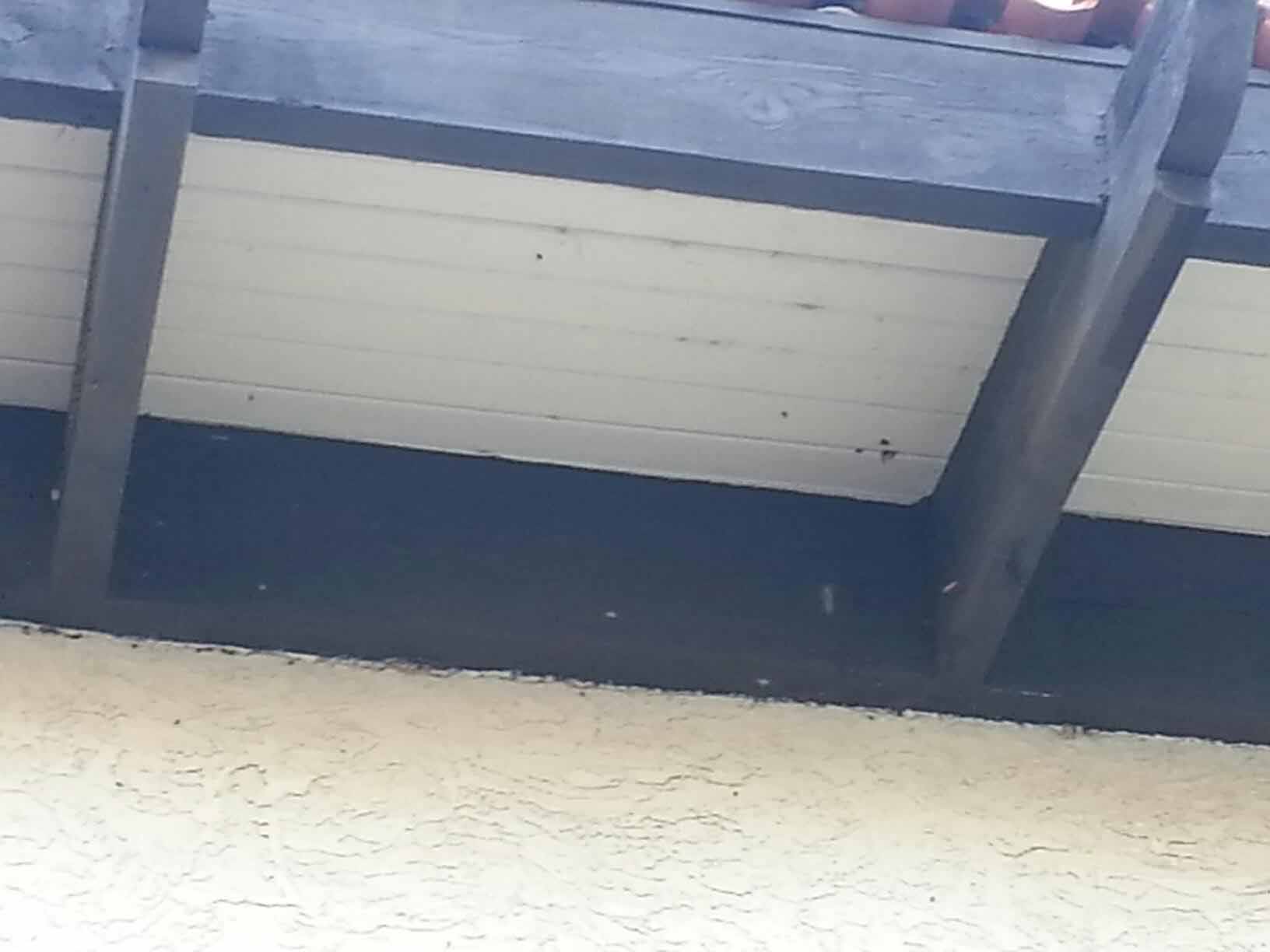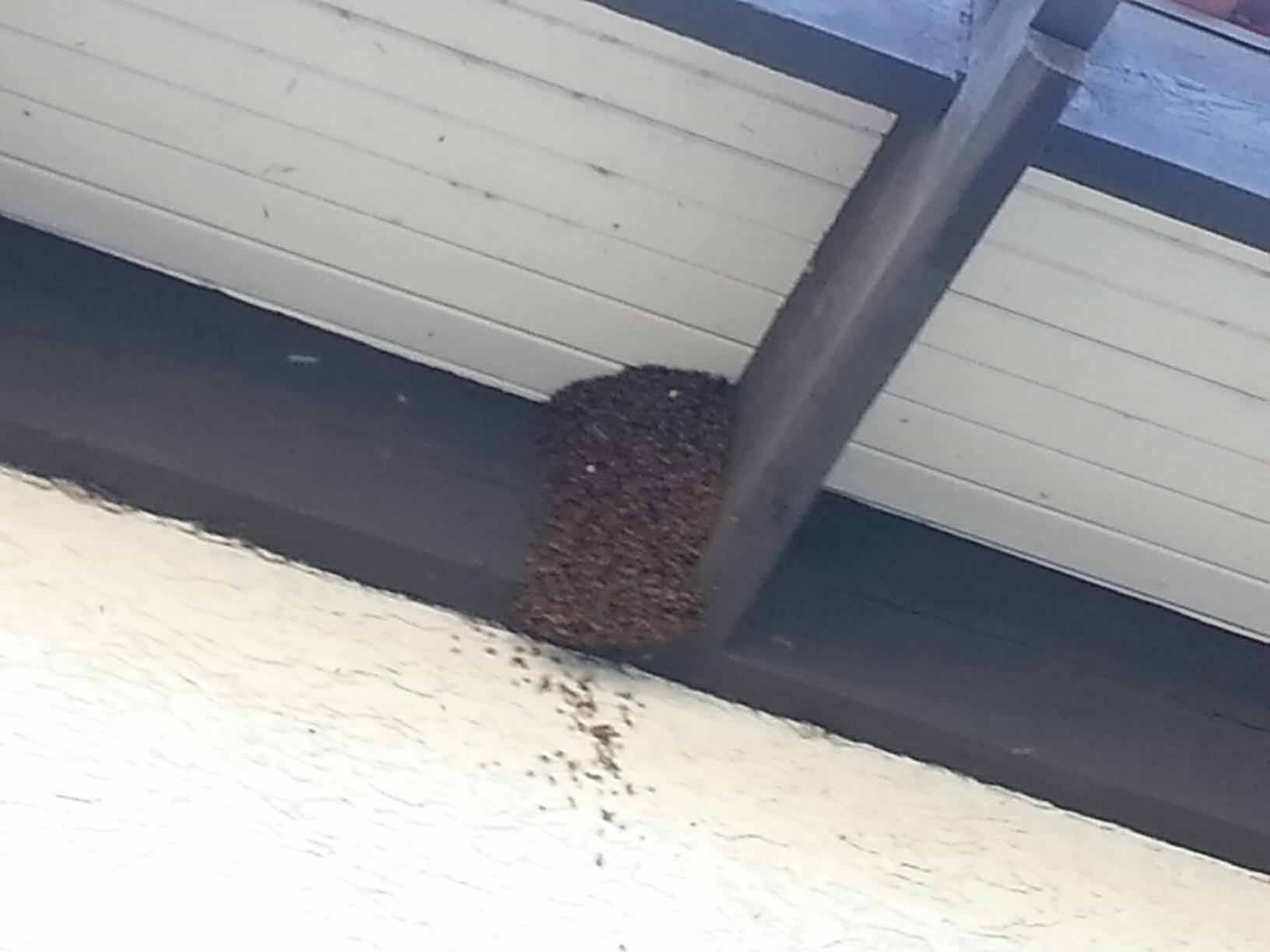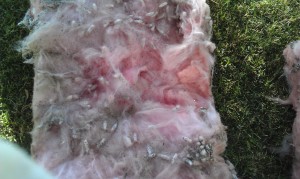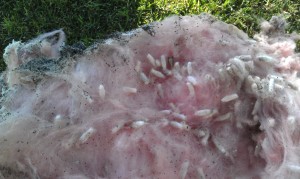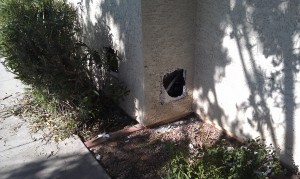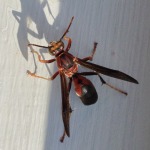Honeybees in a wall
Honeybees – There are many factors that play into a honeybee hive within your home. Determining whether you need to open up a wall to get to the hive. My very first question is “How long have they been there” “When did you first spot them” and of course where are they? So let’s answer these questions and why I want to know?
#1 & #2 “How long have they been there” – this is really important. Let’s say you just noticed them, and you are pretty sure about this because they are at your front door. Would you would have noticed them? See this gives me an idea that they haven’t build much honeycomb, and no reason to open up the wall. Opening up walls is expensive and I don’t like spending money yours or mine unless we have to.
#3 So as we ask question #1 and #2, we need to know where they are, if they are at the front door area what is in there – is it a bathroom or bedroom. I once had them at the front door under a bush and there was a bathroom, they had made there way under the tub area – plenty of room and that had been there a long time. No way to get them out and they were Africanized honeybees plus after we killed them the hive disintegrated and wax moths invaded. Now we have an issue, we had to open up the bathroom wall. But lets say there were under a shed in the very way back of your property, no access but they are again Africanized honeybees we only have to kill them and the hive will be destroyed by roaches and other pests.
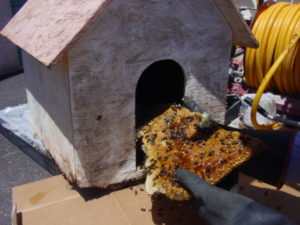
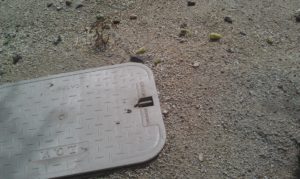
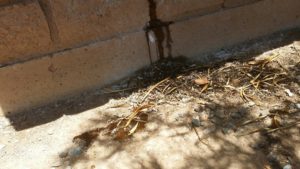
Yikes, where are they hiding?
Dog House, no dog so nobody noticed and water meter box (see the bee)? And the last one is within the block wall and honey dripping outside but never inside. SO IF ANYBODY SAYS YOU HAVE TO OPEN UP A WALL, THINK ABOUT IT FIRST AND YOU DECIDE!


